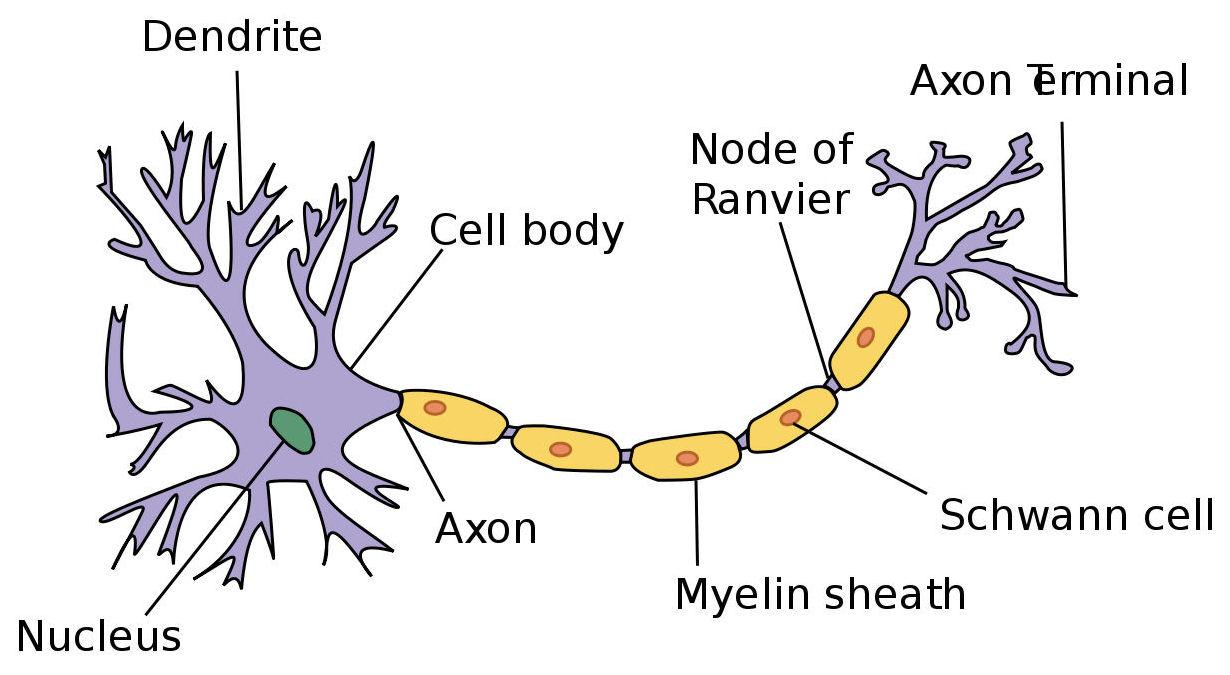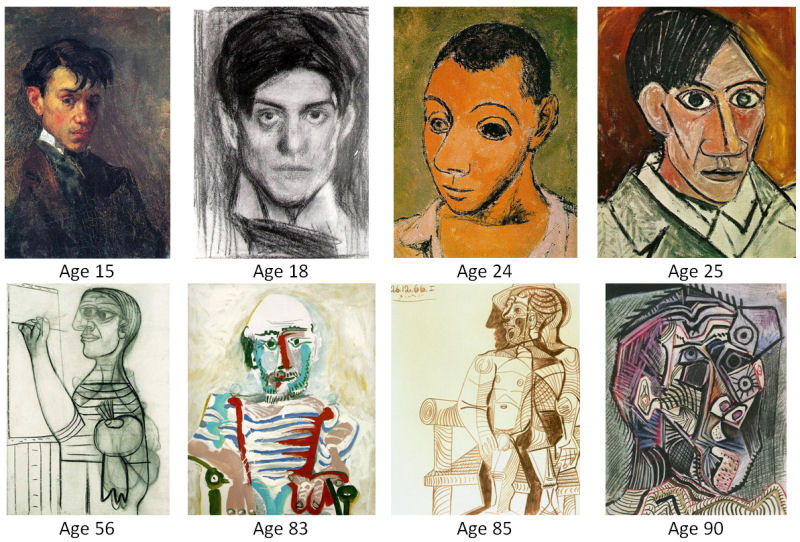A few years ago, I was watching an episode of The Outer Limits called Stream of Consciousness. This 1993 episode depicted an ostensibly Utopian future society in which all citizens were plugged in (via a neural link) to a global repository of knowledge called The Stream. It was an extension of your brain. If you wanted to know something, you could simply – with a single thought – access The Stream’s knowledge base, and recall it instantly, as if you already knew it.

In those pre-Internet days, this was an intriguing concept: visualizing what a society might be like if we all had instant access to a central repository of humankind’s collected knowledge. Just imagine the great things that we could accomplish, the dots that we could connect and the ways that an individual from any stratum of society – armed with this playing field-leveling hardware – could improve not only their circumstances, but perhaps even the entire planet! Surely the average IQ in all cultures would increase significantly.
I know that you’re already comparing that Outer Limits storyline with the development and pervasiveness of the Internet since 1995 (when it was streamed into the public consciousness). We may not have a subcutaneous neural link, but most of us are carrying, in our pockets, a portal to this knowledge repository, which we can access anytime we like, and almost as quickly. However, unlike the (initial) Utopian promises in The Outer Limits, I believe that in some ways, we are moving in the opposite direction. The Internet is actually making our brains less agile than they used to be only a generation ago.
.
Birthdays and Phone Numbers
When I was a kid (well before cell phones, and even speed dial) I had the phone numbers and birthdays of all of my friends and family members memorized. I didn’t need to write anything down. Today, I would be hard-pressed to recite the cell phone numbers of even my immediate family members or any of my friends’ birthdays. These dates and numbers seem to have been purged from my brain. I could blame 10-digit dialing, but I can’t even recall the seven-digit portions of the phone numbers anymore. Thanks to contact lists and calendars, there is no longer a need to remember these things; since we no longer access them regularly they are no longer committed to memory.
.
Song Lyrics
My first office job was back in the late 1980s, and one of my co-workers, Terry, was a walking rock music encyclopedia. He seemed to know every rock band, album and song, and even the career arcs of each band member. Terry and I used to play a little game to challenge our respective musical knowledge. Early in the day, I would wait until he was concentrating on something, then walk over to his desk, lean in and recite a couple of lines from a rock or pop song. At first, he had no problem identifying the song and artist, so I started selecting more obscure tracks. What made this game fun was hitting the proverbial sweet spot: a song that he’s heard before, but not anything current; I didn’t want the lyrics to be fresh in his mind. The goal was to create what psychologists call a TOT – tip-of-tongue phenomenon, in which you know the word(s) but your brain can’t quite access them. Terry and I were essentially trying to mentally torture each other, before finally (and mercifully) revealing the answer at the end of the day.
Early one day, I walked up to Terry’s desk and whispered “The albatross and the whales, they are my brothers“, and then walked away. This song used to be played on the radio a few years earlier, and if I had gauged everything properly, Terry would no longer be able to concentrate on his work, because he would be just on the verge of connecting those lyrics to the song name. The next day, Terry would do the same thing to me – it was great fun!
Obviously, this game could not be played today, unless you stated “No Googling”. Back then, there were no search engines or Internet. We needed to rely solely on our gray matter and its accumulated storehouse of knowledge. Today, you can just type those lyrics into any search engine and the answer will pop up instantly.
.
Where In The World
Back in the 1980s, a local newspaper published a visual puzzle each weekend called Where In the World. They printed a photograph of a famous (or not-so-famous landmark) and you had to send a postcard to the newspaper with your guess. I thought it was a lot of fun. More recently, I was the organizer of a similar game on Mensa Canada’s web site. Each month, I would search for fiendishly difficult, Mensa-worthy photographs of places from around the world, and post them on the web site. The members would e-mail their guesses to me, and those who sent in correct guesses would have their names published on the web site the following month.
After a few months, I noticed that I was receiving a handful of correct guesses within 10-15 minutes of posting the monthly photo. At first, I thought that these people must be off-the-chart geniuses for guessing correctly so consistently. As it turned out, they were nothing but cheats. They has simply dragged the image in to Google Image Search, which then identified the location. I tried to circumvent this by using Google Earth’s satellite imagery, but the screen captures were nowhere near as interesting as photos taken at ground level. Once again, the Internet had ruined what was once an enjoyable brain-teaser.
.
Music Montage
In my spare time, I like to create and post music montages on my blog – little 1-2 second snippets of songs that visitors have to guess. These were patterned after the radio station contests from my youth. A few years ago, I had an idea for a new montage theme, called “I know that riff!”. The idea came to be when I was listening to the radio in the car. I can usually identify a pop or rock song within five seconds, but occasionally I’ll turn on the radio and catch a snippet (usually during the bridge or the instrumental) and I’ll have to listen to it for 10-15 seconds before I can come up with the title. Over the next few months, whenever this happened I would write down these songs with the aim of creating a music montage – filled with music samples that will be difficult to guess.
Unfortunately, I had to abandon this idea because of the emergence of song identification apps like SoundHound. You simply launch the app, and then play a few seconds of a song into your phone’s microphone, and it will identify the title and artist. Once again, you no longer have to probe the deepest corners of your mind to extract audio information – technology now does this for you.
.
Social Media Puzzles
I’ve seen a few brain teasers posted on social media, but even these are not immune to the helpfulness of the Internet. I remember a popular riddle a few years ago: “There are three words in the English language that end in ‘gry’: angry and hungry are two of them. What is the third?”. If you don’t want to stretch your mental muscles, then you can simply use a wildcard dictionary. Just type in: *gry and select the “common words and phrases” option, you will see the results.
.
The Danger of Technological Convenience
“We choose to go to the Moon in this decade and do the other things, not because they are easy, but because they are hard.” – John F. Kennedy
On the surface, Internet-related conveniences are wonderful, and in some ways they have delivered everything that was promised in that episode of The Outer Limits. However, they are still a concern for me because we aren’t using our brains to look up information as much as we did a generation ago. Why is this important? A while ago I read a book called The Talent Code, by Daniel Coyle and while it doesn’t address the effects of technological change specifically, it does offer – indirectly – some insight into what is happening.

To understand the book’s premise, you’ll need a basic familiarity of the brain, and how our neurons function. At the risk of oversimplifying things, our neurons are connected to each other via long, stringy nerve cells called axons. Signals travel from one neuron to another along the axons. These axons are surrounded by a myelin sheath, which speeds up the signals significantly. In fact, one of my university professors told us that without the myelin sheath, our cerebral processing would be so slow that we humans would be the mental equivalent of slugs.
According to Daniel Coyle, repeating or practicing an action or behaviour thickens the myelin sheath around the axons of the associated neurons. The thicker the myelin sheath, the more efficiently the signals travel between the neurons, and the less effort is required to perform the behaviour. That, in essence is why our skill level increases as we practice something repeatedly. Conversely, if we stop practicing, then the amount of myelin starts to decrease. The phrase “if you don’t use it, you lose it” encapsulates this phenomenon.
Malcolm Gladwell, in his book Outliers, devotes an entire chapter to Anders Ericsson’s 10,000-Hour Rule. His argument is: if you want to achieve mastery in a certain activity, then you need to devote at least 10,000 hours of practice to it.
Technology now performs many mental tasks for us, and as a result, our ability to perform them well (or at all) decreases over time.
.
GPS and Map Reading
With the advent of GPS, map reading and navigation will also become a more esoteric skill. When I was in grade six, our class went on a field trip that involved orienteering. We were given a map and a compass and (after being taught how to use them) we were sent into the woods to locate a bunch of markers attached to trees, and write down the messages written on them as proof that we found them. Then, we had to make our way back to the starting point. Just imagine if a group of teachers sent a bunch of grade six students into the woods without a cell phone or GPS – no form of communication at all – and asked them to find their way around using only a map and a compass…
Of course, you could argue that with the popularity of online maps and GPS, we’re doing more map reading than ever. This may be true, but a generation ago we didn’t have a marker to show us our location on the map, a compass to help us get our bearings, or a voice assistant to give us turn-by-turn directions to our destination – we had to figure all of that out ourselves.
.
The End of Cursive Writing

Cursive writing is another example of a low-tech skill that is being coerced into retirement by online technology. I can understand the reasoning, since the vast majority of our written communication is now done at a computer keyboard. However, like an untrained orienteering student, I think the educators who are making this decision are missing the proverbial forest for the trees. They need to zoom out and look at the big picture.
Cursive wiring is more than a form of communication; it’s a way for children to develop their fine motor skills and manual dexterity. If we don’t encourage them to learn and practice cursive writing, then unforeseen problems may manifest themselves when they become adults. The inability to sign one’s name legibly – and thus sign any legal documents – is just one thing to consider.

In the movie The Karate Kid, I’m sure that you recall the classic scene in which Mr. Miyagi tells Daniel to “wax on, wax off”. Daniel didn’t see the utility in this exercise at the time, but the repeated motions were the same motions used in defensive moves, and were building his muscle memory. From The Talent Code angle, Daniel was strengthening the myelin sheath around the axons that connect the neurons responsible for this movement, and thus was helping his brain to perform a certain range of motions quickly and effortlessly.
Now let’s look at the demise of cursive writing from The Bob Angle. I believe that a sharp, nation-wide reduction in the number of children learning cursive writing may result in a corresponding reduction of manual dexterity in the next generation of adults. This will lead to a shortage of qualified candidates for positions requiring fine motor skills and superior hand-eye coordination: surgeons, dentists, commercial pilots, electronic technicians, auto mechanics and car detailers, tailors, makeup artists, tattoo artists, and watch repair specialists. Of course, we won’t know if my hypothesis is correct until it’s too late…
.
Closing Thoughts
“In the year 5555, your arms hangin’ limp at your sides.
Your legs got nothin’ to do. Some machine’s doin’ that for you.“
— Zager & Evans, In The Year 2525
Long-term predictions of a future society often tout convenience as a major selling point. Most of us are never without our smartphones, and it’s now difficult to contemplate life without them. However, as our dependence grows on the multitude of services that these gadgets provide, we should consider the long-term effects of this dependence. Muscles atrophy after a prolonged period of inactivity, and I believe that our mental acuity will also diminish unless we make a concerted effort ensure that our brains do more of the proverbial heavy lifting.
.
.






















 Next, I pieced together a biography. Louis Wain was born in London, England, on August 5, 1860. He was the eldest of six children. Between 1877 and 1880, Louis studied at the West London School of Art from 1877-80, and then became an assistant teacher there until 1882, when he then started working for the Illustrated Sporting and Dramatic News. Wain was an art journalist, as well as a freelance illustrator. His illustrations included English country houses and estates as well as livestock, but Wain began to make a name for himself with his cat drawings, which he drew for the Illustrated London News. His drawing were both humourous and anthropomorphic – the cats were not only clothed, but also doing human things such as serving tea, playing cricket, fishing and riding bicycles. Wain drew several hundred drawings each year, and illustrated about one hundred children’s books. His youngest sister, at age 30, was declared insane and was committed to a mental asylum.
Next, I pieced together a biography. Louis Wain was born in London, England, on August 5, 1860. He was the eldest of six children. Between 1877 and 1880, Louis studied at the West London School of Art from 1877-80, and then became an assistant teacher there until 1882, when he then started working for the Illustrated Sporting and Dramatic News. Wain was an art journalist, as well as a freelance illustrator. His illustrations included English country houses and estates as well as livestock, but Wain began to make a name for himself with his cat drawings, which he drew for the Illustrated London News. His drawing were both humourous and anthropomorphic – the cats were not only clothed, but also doing human things such as serving tea, playing cricket, fishing and riding bicycles. Wain drew several hundred drawings each year, and illustrated about one hundred children’s books. His youngest sister, at age 30, was declared insane and was committed to a mental asylum. The story takes place in Boston, in 1642. At the time, the city’s citizens were known as Puritans. The Puritans were a group of Protestants who felt that the Church of England had not distanced itself enough from the Church of Rome, and hence wanted to purify the Church of England by ridding it of all traces of Roman Catholicism. They demanded a very strict code of conduct, and by today’s standards they would be considered fundamentalists, or even extremists.
The story takes place in Boston, in 1642. At the time, the city’s citizens were known as Puritans. The Puritans were a group of Protestants who felt that the Church of England had not distanced itself enough from the Church of Rome, and hence wanted to purify the Church of England by ridding it of all traces of Roman Catholicism. They demanded a very strict code of conduct, and by today’s standards they would be considered fundamentalists, or even extremists.


 These days, web sites get hacked all the time, but the
These days, web sites get hacked all the time, but the 
 In my American Literature class, we suggested that Hester Prynne’s letter “A” – in addition to adulteress – might also mean angel, able and America. I think that the letter “A” is still apt in today’s age of social media shaming. It continues to stand for adultery (as evidenced by the Ashley Madison data breach and the police billboard displaying the names of “johns”), and I would now like to propose some additional meanings:
In my American Literature class, we suggested that Hester Prynne’s letter “A” – in addition to adulteress – might also mean angel, able and America. I think that the letter “A” is still apt in today’s age of social media shaming. It continues to stand for adultery (as evidenced by the Ashley Madison data breach and the police billboard displaying the names of “johns”), and I would now like to propose some additional meanings: